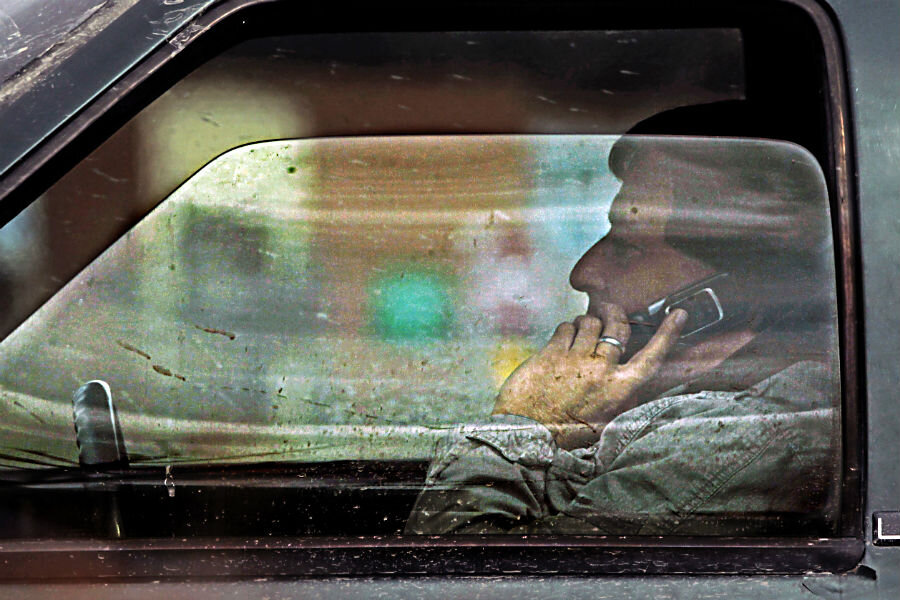What's behind big rise in traffic deaths in 2015?
Loading...
| Washington
Traffic deaths were up 14 percent nationally in the first six months of this year and injuries were up by a third, according to data gathered by the National Safety Council.
An improved economy and low gas prices have encouraged Americans to put a record number of miles on the road, said Deborah A.P. Hersman, president of the council. But, she said, that's not the whole explanation for the increase in deaths and injuries.
All told, nearly 19,000 people across the country lost their lives in traffic accidents through June, and the tally doesn't include two of the historically highest months for traffic deaths, July and August, said the council, a nonprofit organization created by Congress to promote safety.
If the trend continues, traffic deaths this year could exceed 40,000 for the first time since 2007, when there were nearly 44,000 deaths, Hersman said in an interview. The increases began in the last quarter of 2014 and have been recorded consistently through each month of this year, Hersman said.
"As a safety professional, it's not just disappointing but heartbreaking to see the numbers trending in the wrong direction," she said.
The nation's driving steadily increased for 15 consecutive months through May, the Transportation Department said in July. Americans drove 1.26 trillion miles in the first five months of 2015, passing the previous record, 1.23 trillion, set in May 2007.
However, the cumulative increase in vehicle mileage this year through May is 3.4 percent, far less than the 14 percent increase in deaths, Hersman noted. Also, the estimated annual mileage death rate so far this year is 1.3 deaths per 100 million vehicle miles traveled, up from the preliminary 2014 rate of 1.2 deaths.
Other safety trends are at play as well. In recent decades, deaths due to crashes involving drunken driving have dropped from about 50 percent of fatalities to about 30 percent, she said. Teen driving deaths are also down, and seatbelt use is up. And cars have more safety technology than ever, although drivers sometimes don't use it or don't know how to use it, Hersman said.
On the other hand, a growing number of states are raising speed limits, and everywhere drivers are distracted by cellphone calls and text messages. The council estimated in a report this spring that a quarter of all crashes involve cellphone use. Besides fatal crashes, that includes injury-only and property damage-only crashes.
"For many years people have said, 'If distraction is such a big issue, why don't we see an increase in fatal crash numbers?' Well, we're seeing increasing fatal crashes numbers, but I think it's complicated to tease out what that is due to," Hersman said.
As The Car Connection reported: the AAA Foundation for Traffic Safety has released data from a new study that confirms what the NTSB and others have already claimed -- namely, that hands-free calls can be just as distracting as those made while drivers hold a device.
The Christian Science Monitor also reports that a number of studies have linked cell phone use to car crashes:
A 2003 study at the University of Utah determined that drivers speaking on cell phones showed greater impairment than drivers whose blood-alcohol level was at the legal limit. What's more, the researchers found no significant differences in performance between drivers holding the cell phone and those using a hands-free device. These findings and many others have led the American Psychological Association in 2006 to declare: "Driving and cell phones don't mix."
Jonathan Adkins, executive director of Governors Highway Safety Association, which represents state highway safety offices, confirmed that states have taken note of the trend as well.
Given the stronger economy, lower unemployment and low gas prices, "we have expected an uptick in travel and, sadly, deaths," he said.
"The increase is definitely troubling," Adkins said. "But after such historic declines in recent years, it's not unexpected to see an upswing."
___
Online:
The National Safety Council: http://www.nsc.org/pages/home.aspx
MyCarDoesWhat.org: https://mycardoeswhat.org
___
Follow Joan Lowy on Twitter at http://www.twitter.com/AP_Joan_Lowy





